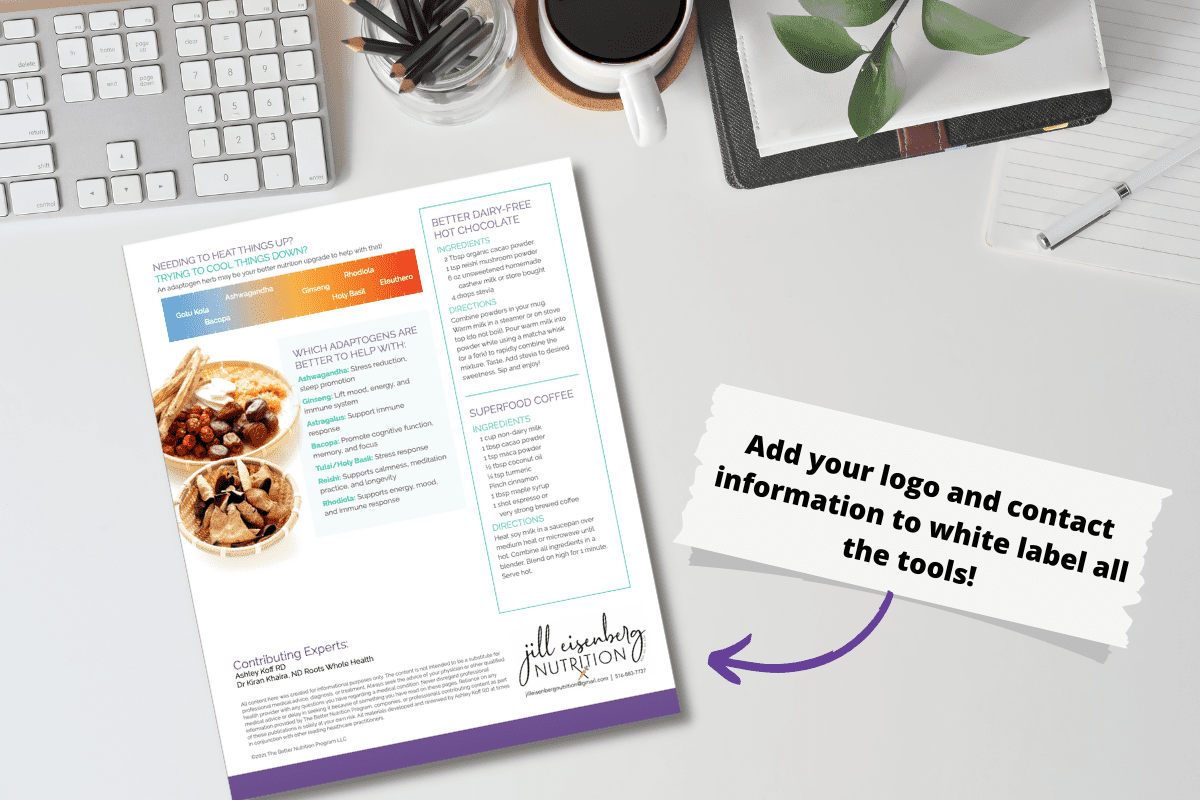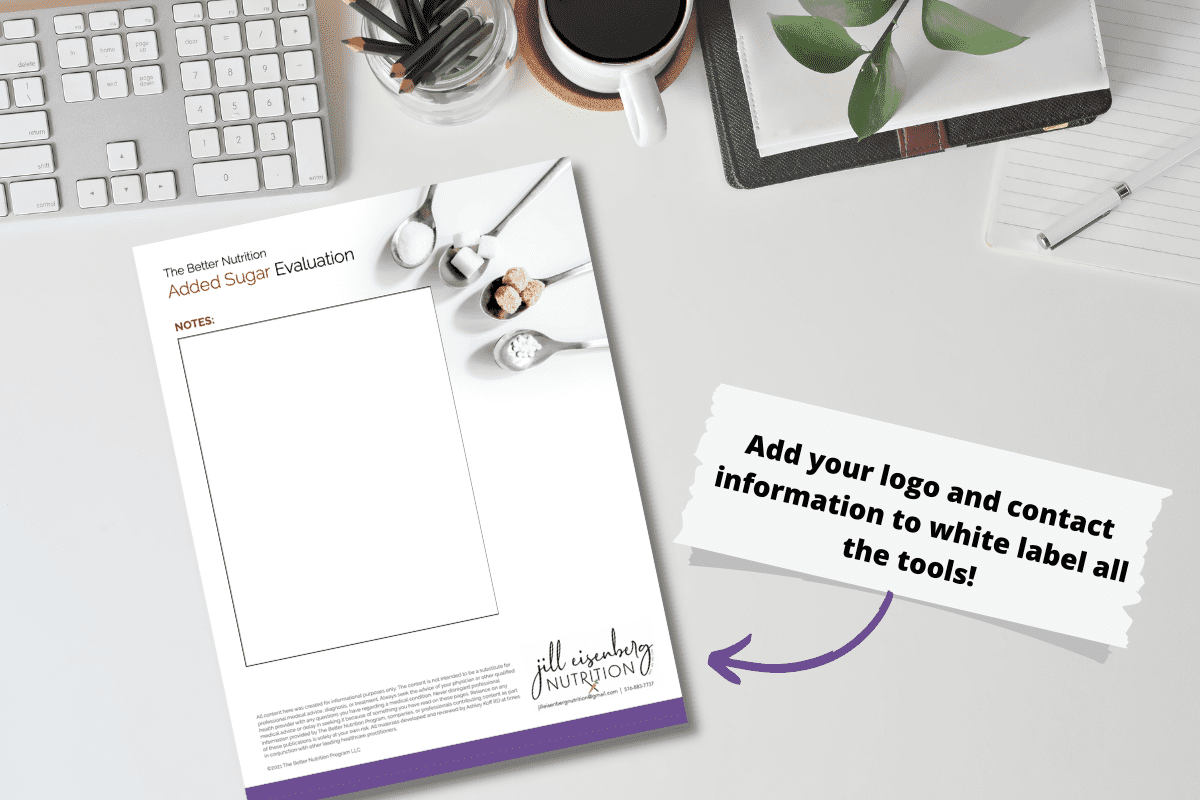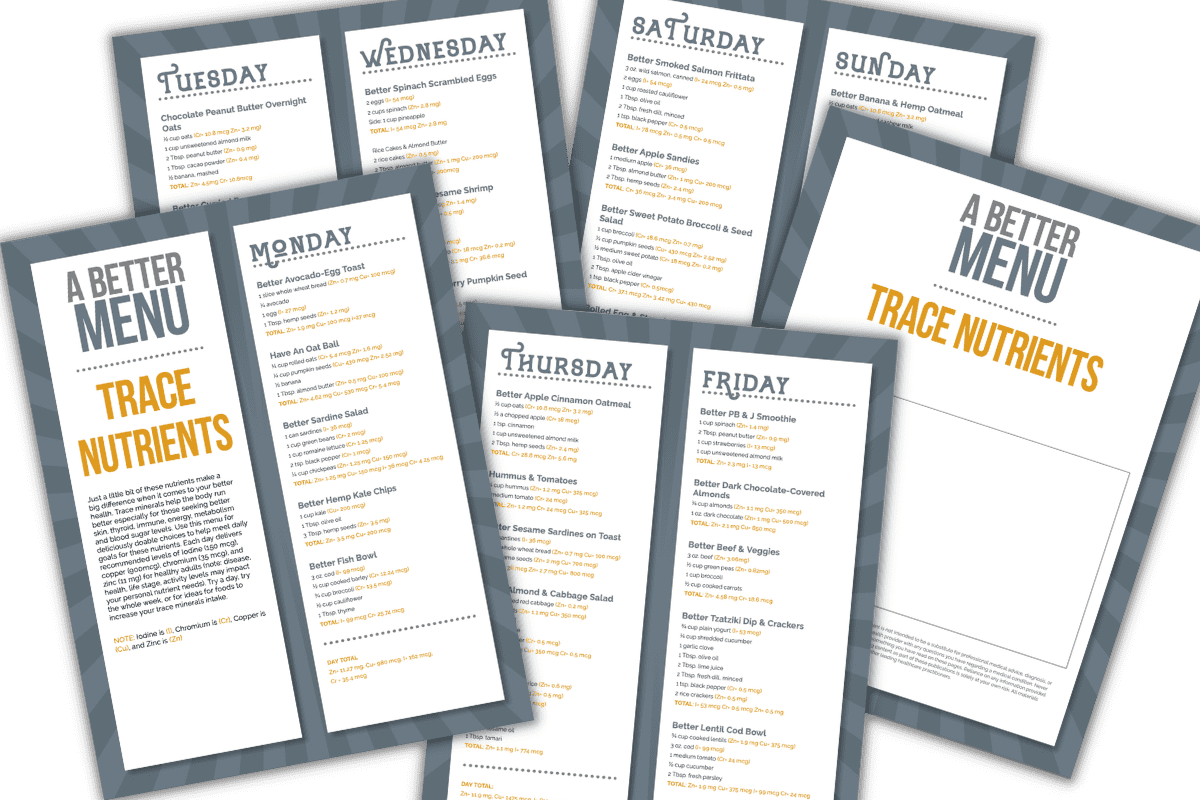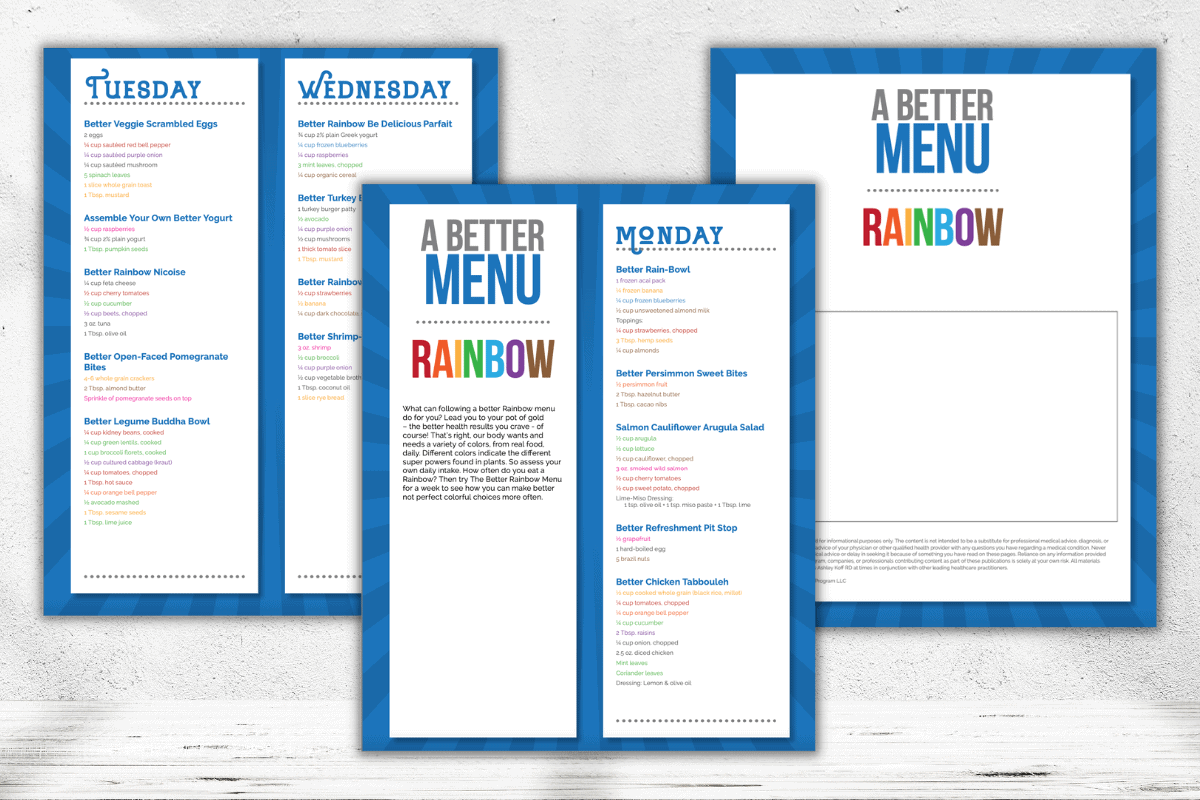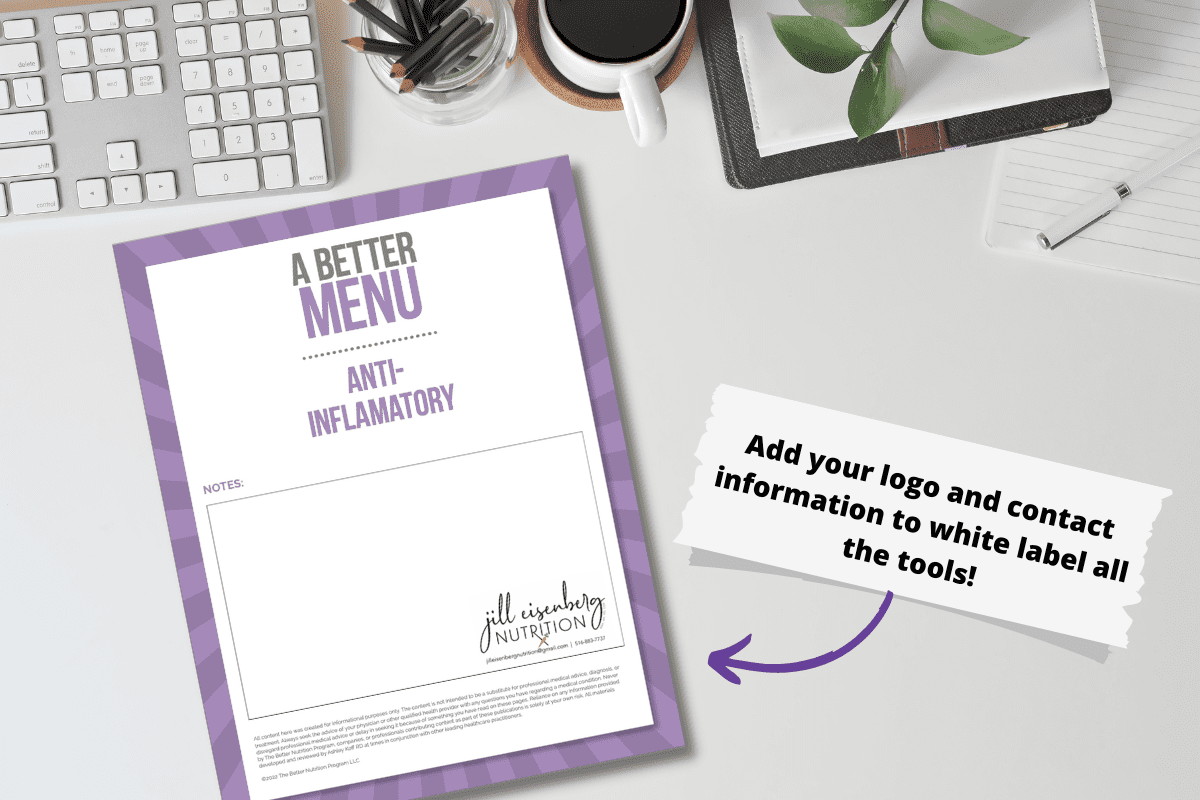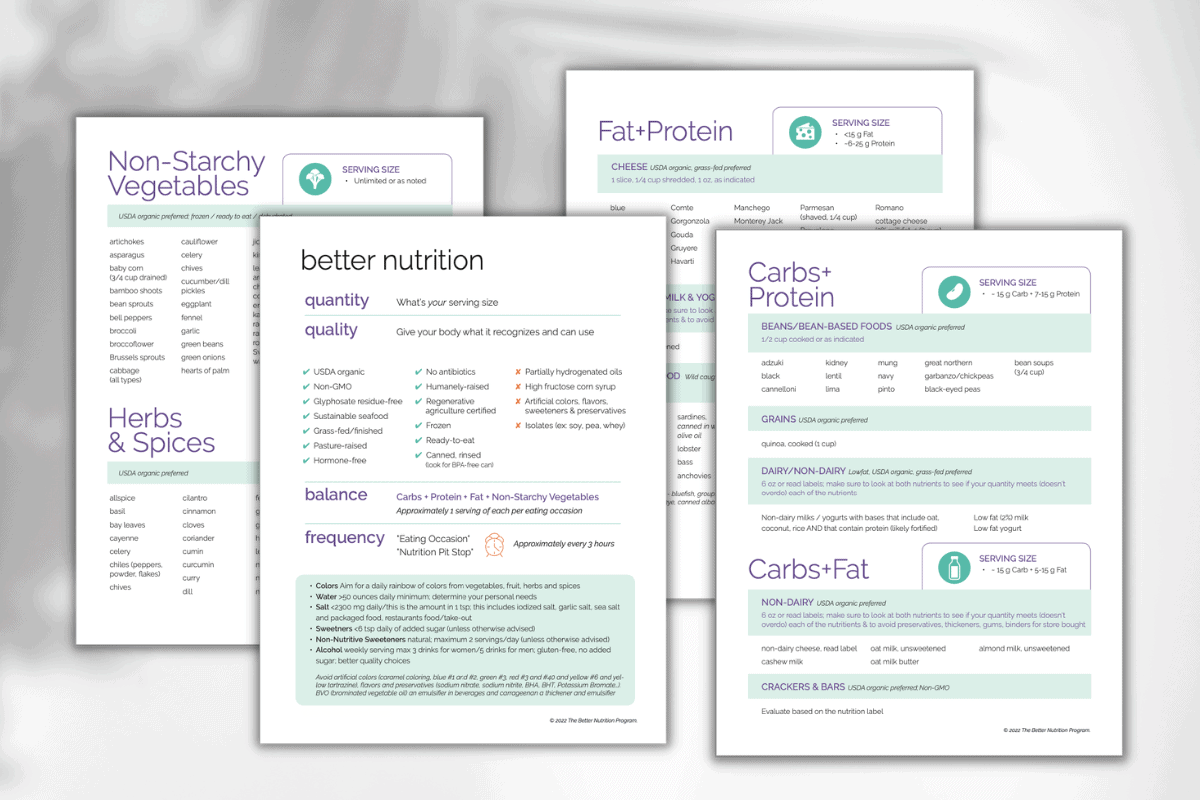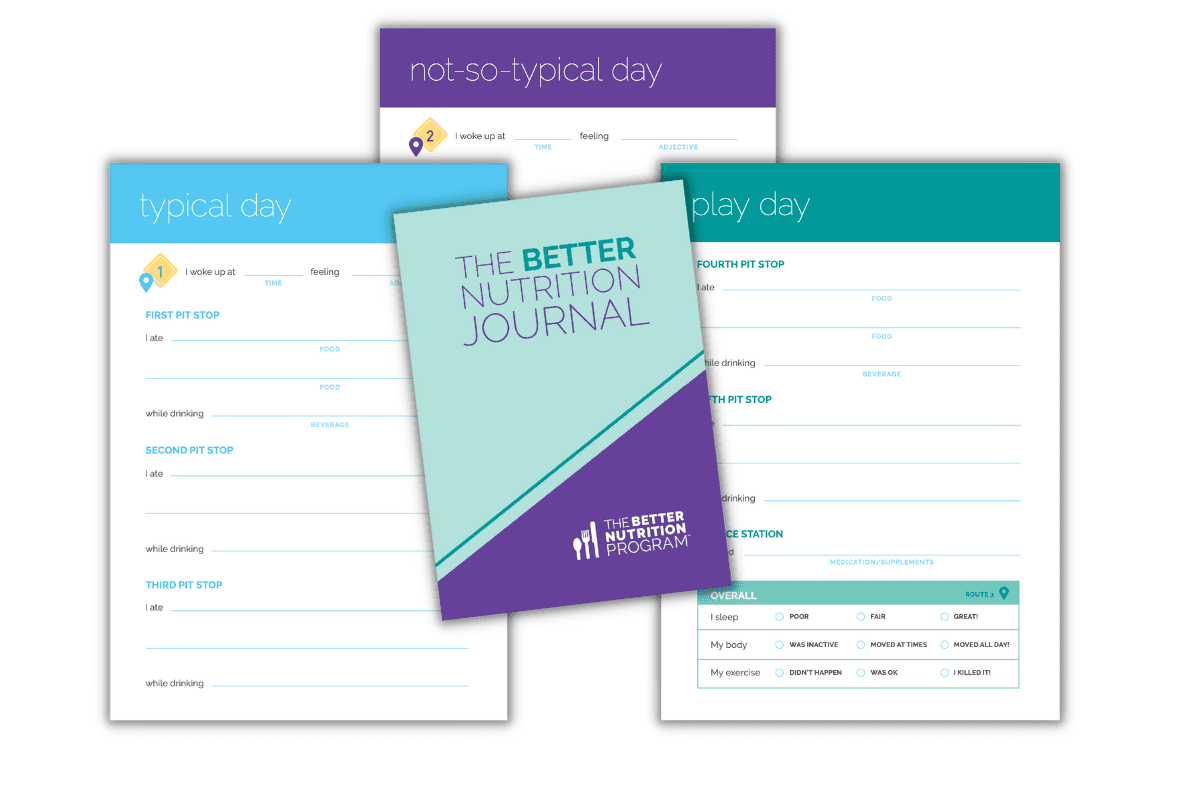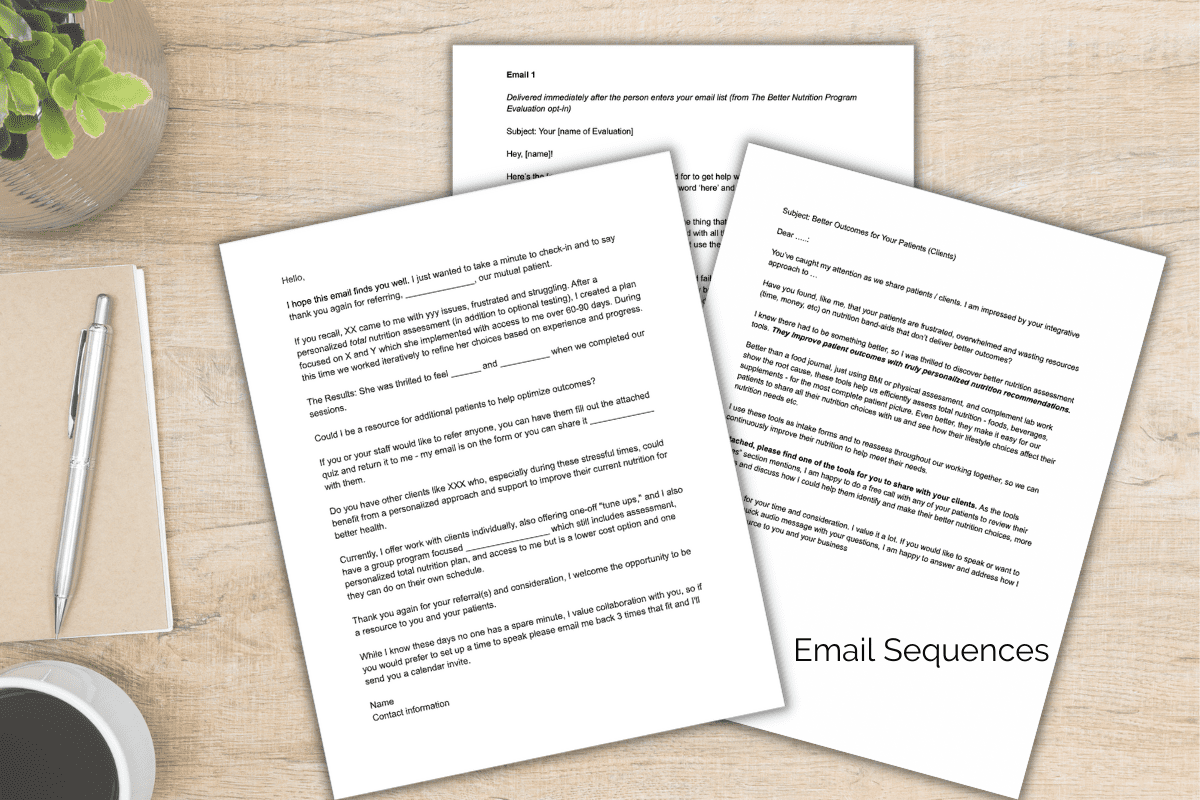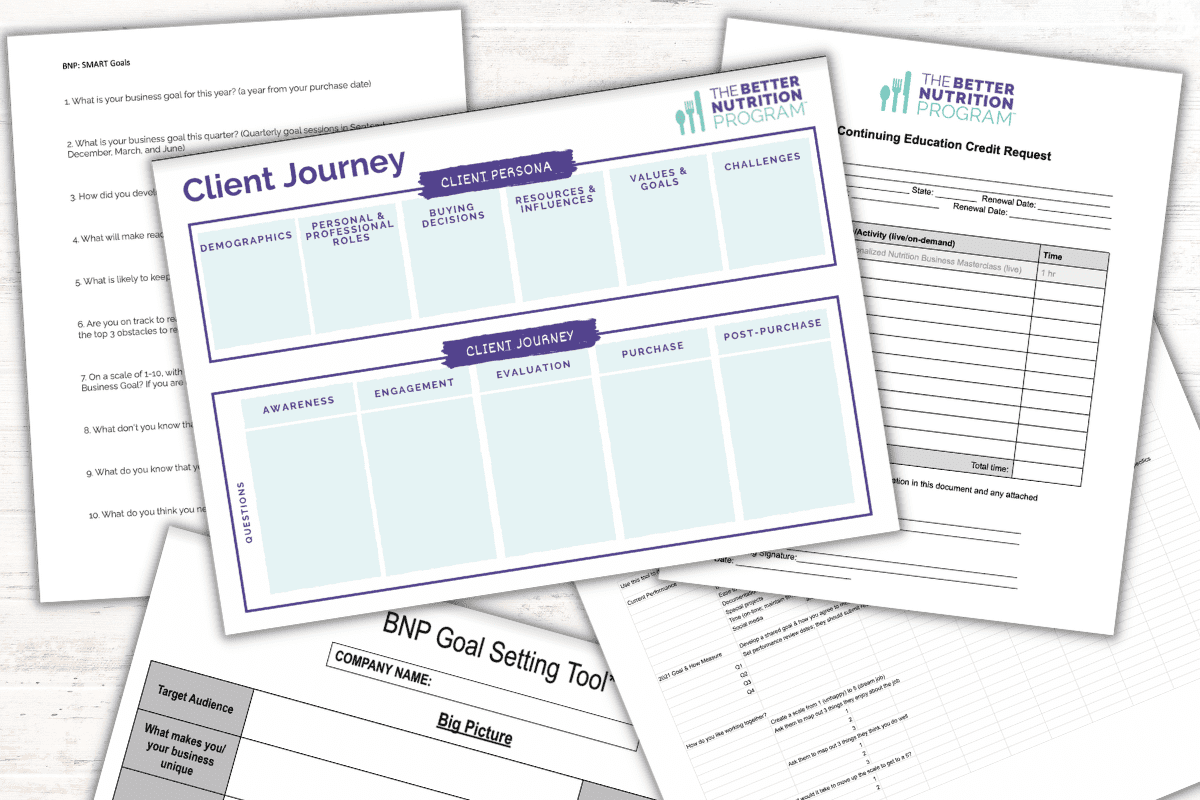We worked our butts off to become healthcare practitioners because we want to help people get and stay healthy.
That’s why it feels so awful, so downright maddening when our patients don’t make the better nutrition choices we know they need to get and stay healthy.
Like when this happens.
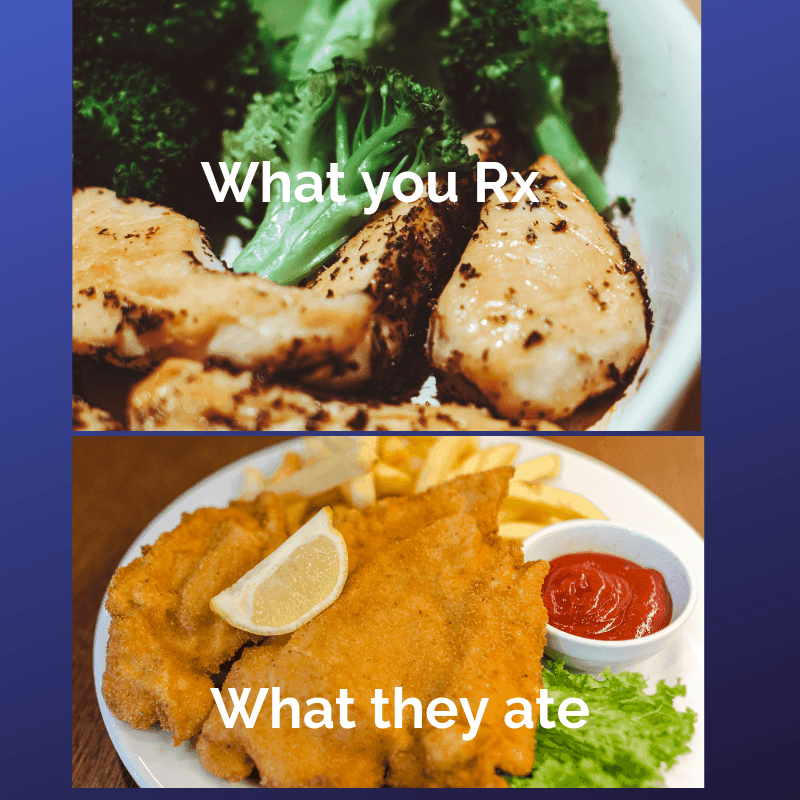
Has this ever happened to you with a patient?
I hate to admit that this makes me feel like I am wasting my time and theirs.
And, I hate that feeling.
So how do we create more wins?
#NotANewsflash: Information doesn’t typically lead to behavior change.
She isn’t making better nutrition choices more often due to lack of information. It’s the opposite, in fact. Too much information is more likely to keep her from making her better choices.
She isn’t making better nutrition choices because she doesn’t have HER better choices.
Information is not personal. Successfully making behavior changes demands personalization.
When you create personalized nutrition recommendations, your patient gets what she needs to make her better nutrition choices more often #NoArmWrestlingRequired

Do you recall a patient who recently won?
What did she do to win? How did you help her win?
In case a patient doesn’t immediately come to mind, I thought I’d share mine. Yeah, as in me the patient…yep this dog recently learned a new trick, not new information.
From Dehydrated Dietitian to Water Winner: I recently increased my out of home water intake from unlikely to at least 16 ounces when I waited – again – on my partner to get in the car because he was filling his water bottle. Ego? You betcha. And example. He showed me how easily I could get more water out of the home versus hoping to get in enough. I easily have over 15 stainless steel and glass water bottles at home because I have the info that plastic isn’t better; I know my daily water needs and work to get them in at home. But it took a personal example to help me change my out of home water behavior. BONUS: he now fills two water bottles before we leave, and I use the time to bang out a few quick emails. #WaterWinner
For you to empower her, you must shift from being a source of information to becoming their better nutrition tool. As a better nutrition tool, your patients learn from, train with, and become proficient users of your help to make their better nutrition choices more often. That is how you empower them.
Here are the three steps to empower your patient to make her better nutrition choices more often:
#1 BEFORE you see her, help her get you all the information you need about her usingthese better nutrition assessment tool(s) to as your intake forms:
- If your assessments only include a food journal, BMI or body comp testing, and labs, you don’t have all her data.
- You need to know her total nutrition – what goes in and on her body most often – BEFORE you can create a personalized nutrition recommendation.
- You will NOT have the time nor will she remember everything at her exam.
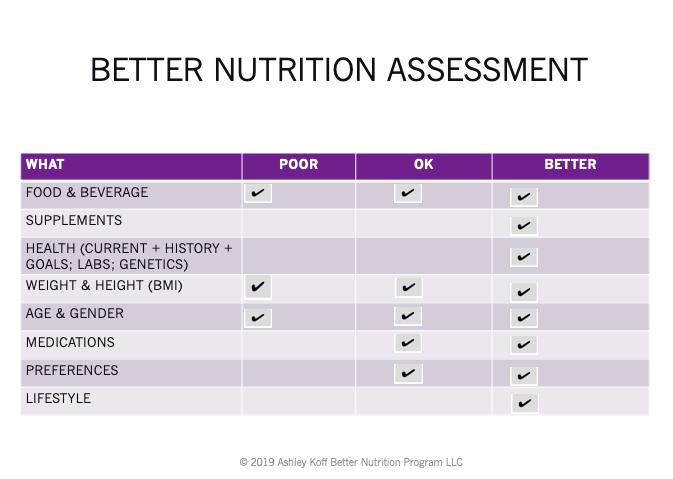
#2 Search all your data to identify the BIG win(s). Find her BIG win, because it is your BIG win too.
- MORE IS NOT BETTER: You may discover 15 items that she could do to get healthier. Don’t share them all with her! She likely knows them too. This “things I should be doing but am not” list likely keeps her up at night.
- BIG WIN: If she sleeps better, her ability to make better choices – food, fitness, stress management – get better. Helping her sleep better will likely whittle that list from 15 down to 8.
#3 Identify her better next step(s).
WARNING: Do NOT prescribe like an Instagram post. An insta post is designed to get as many likes and followers as possible. Your patient goal is to help just one person – her – make her better nutrition choices more often.
Sample Instagram post and better next step(s):
Insta post: For better sleep get in enough magnesium, avoid eating 3 hours before bed, and journal.
Better next step(s):
“Your body needs magnesium to turn off the stress response in each cell let’s make sure you are getting in enough most days, please take this quiz and email your results by Friday at 12pm.” [note: then you or your team needs to follow-up].
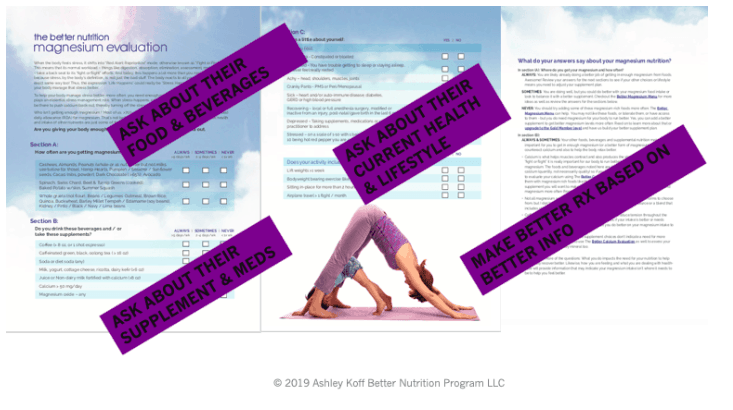
OR if you had her take the magnesium quiz before or during your session you, then you can jump in with specific magnesium Rx like trying a day from our menu and / or adding a supplement after dinner.”
“Your body wants you to pit stop for better nutrition regularly throughout the day. I notice that you go longer without a pit stop earlier but then tend to eat more in the evening. I call this backloading. It makes it harder for your body to go from work mode to relax and sleep mode. Let’s switch your dessert to a delicious snack at 4pm when you get the kids. Aim to not eat after dinner. My patients say it’s easier if they stay out of their kitchen. If you have to be in the kitchen to pack the kids lunch or just feel hungry have some crunchy non-starchy vegetables (which should include some of those veggies too!).”
“Our to-do lists can keep us awake. Put a pen and journal by your bed and write down three things you worry about and then three things you are grateful for that day. Write it in a journal – do not use your phone. We want to stop looking at our devices before bed.”
Should you never share information?
Have you shared delicious, nutritious recipes, healthy eating tips including what to order at Chipotle and how to get in more potassium-rich foods or how to hack an anti-inflammatory diet?
Us too. And it is great to do so! Because better quality information can help someone make better nutrition choices more often. Information can be a catalyst.
- Consider setting up a schedule of sharing information that you find useful like tips that worked for your patients with your other patients.
- Identify common BIG WINS to focus on as the content topic and advice you can share.
- Get personal to help them see that you walk the talk too.
Are any of these tips or my stories resonating with you?
I would love to connect directly, want to grab a virtual “coffee with Ashley” slot (we can do phone or Skype)? Oh, and if you don’t see my water bottle please remind me – I would love the help continuing to implement my new ‘water bottle more often’ behavior.




